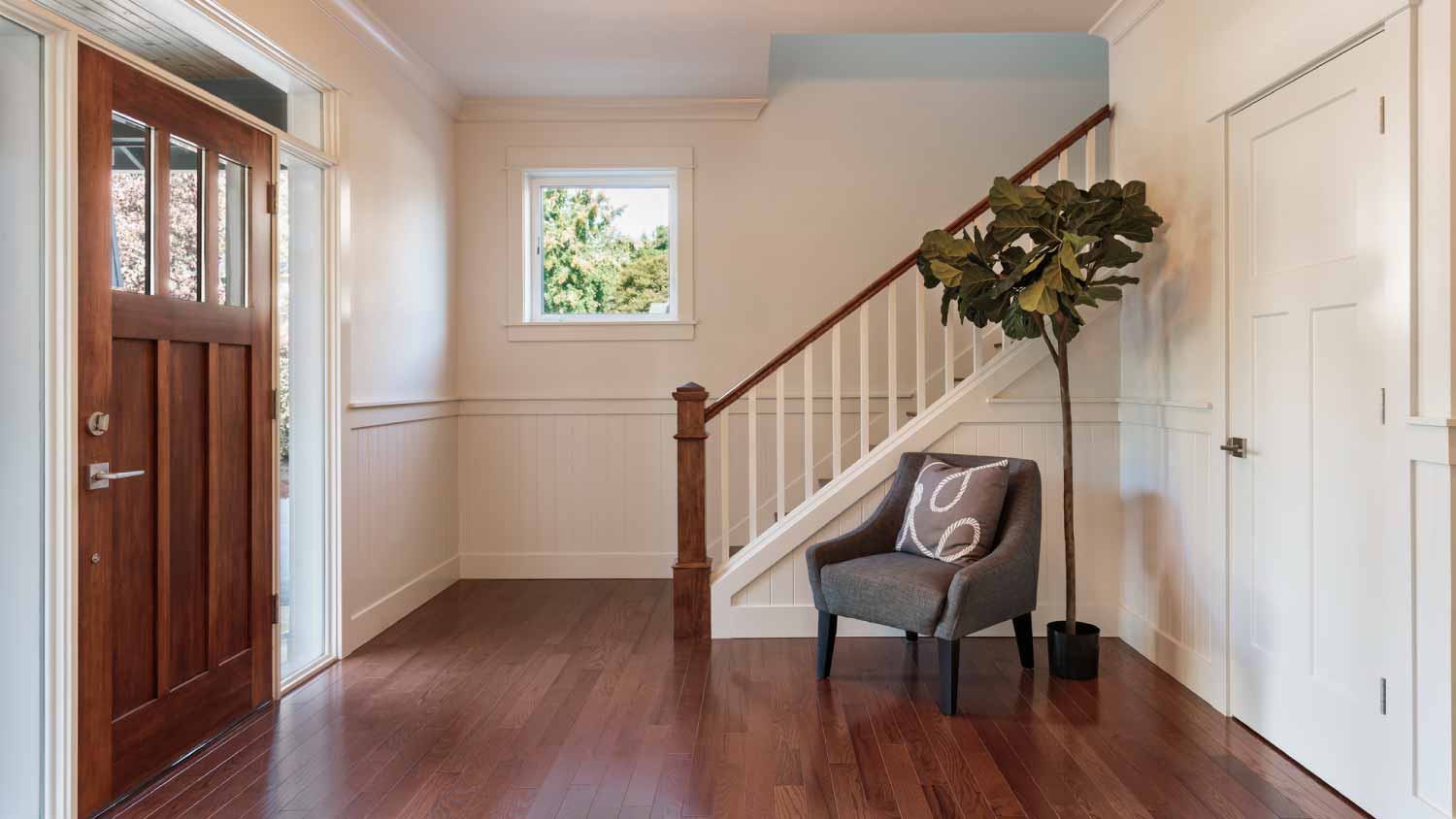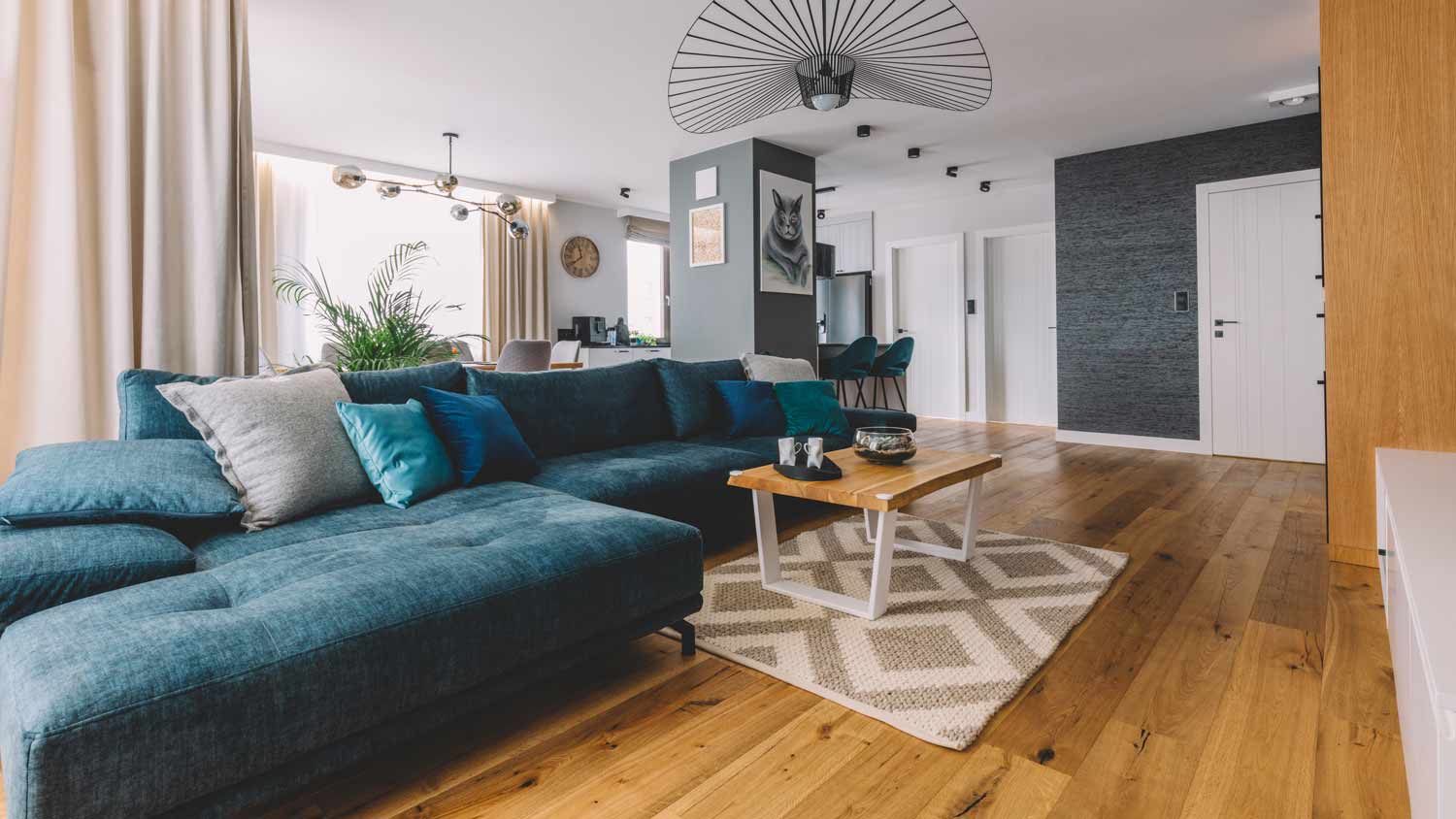How to Fix Scratches in Bamboo Flooring: 4 Methods
These strategies for dealing with simple scratches won’t bamboozle you


It’s not unusual for small scratches and scuffs to form on bamboo flooring subject to heavy footfall. Stones in shoe soles, moving furniture, and accumulating dirt and debris are common culprits. While no flooring is 100% scratch-proof, fortunately, there are some quick and low-cost fixes for light scuffs and scores that even the least handy homeowner can handle. If you’re not sure how to fix scratches in bamboo flooring, we’ve got you covered with the strategies below.
Prep Bamboo Flooring for Repairs
Assess the scratches' depth before you try to fix them. A superficial fix might not be enough when the scratches are extensive and deep. You may need to refinish your bamboo flooring (sanding followed by resealing) or replace a board or two instead. Even superficial scratches can require different treatments. You can often remove light scuffs with a polish or pen, but deeper ones may need filling. You also need to match the product's color to your bamboo tone.
Once you have the products, prep the flooring. Vacuum or sweep the surface, then wash and dry it. Unless you’re polishing away a scuff rather than a scratch, using fine-grit sandpaper to lightly smooth the scratch edges first makes it easier to return the surface to its glossy glory.
How to Fix Scratches In Bamboo Flooring

How you fix a scratch in bamboo flooring is similar to how you get scratches out of hardwood floors. You can try various methods, but the best solutions depend on how deep the scratch is and the color of the planks. That’s why it’s important to scrutinize the scratch before you buy any products and get to work.
Buff the Scratch Away
Breathe a sigh of relief when you see white micro scratches or scuffs that don’t expose the surface of the raw wood on your bamboo flooring—they’re the simplest to repair. It might be enough to wash them off using a cleaner that is safe for use on bamboo flooring. Alternatively, lightly buffing the scratch with a white polishing pad can lift scuff marks or light scratches without causing any color fade.
Use a Nut

If you spot a light scratch and have a bag of walnuts (or pecans or almonds) in your pantry, it’s worth trying this hack before purchasing other products.
Crack the walnut, discard the scratch-inducing shell, and warm the nut in your hands. Gently rub the oily nut along the scratch line and then buff it with a soft, dry microfiber cloth. These natural dyes and oils are often enough to lift or disguise scuffs and micro scratches.
Use a Scratch Removal Product
You can color in fine scratches on bamboo flooring to disguise them. Fast-drying lacquer pens, staining pencils, and markers are available in varying shades and thicknesses.
Application techniques vary depending on the product, but it’s usually straightforward if you have a steady hand. After shaking the pen and cleaning and drying the surface, apply the color in an even stroke.
Ensure the product is marketed for use on bamboo (or at least wood) and special finishes, such as polyurethane.
Use Wood Putty or Wax

Filling in wider scratches with color-matched wood putty or wax is possible. Instructions for application vary depending on the product, but it’s best to apply a small amount at a time using a putty knife, removing any excess with damp paper towels. Wax won’t need sanding, but sanding down the hardened putty smooths out the surface.
When you aren’t sure whether to use a pen, putty, or wax, consider investing in a wood floor repair kit. These contain a combination of wax, putty, and pens suitable for use on bamboo surfaces.
Sealing the sanded areas with an appropriate finishing product provides extra protection, especially when you’re dealing with multiple deeper scratches.
Why Is It Important to Fix Scratches in Bamboo Flooring
Leaving scratches to accumulate looks unsightly and spoils the floor’s smooth appearance. It can also lead to more serious damage that’s harder and more costly to repair. Ultimately, repairing scratches boosts the looks and longevity of your bamboo flooring. This is important, given that the cost to install bamboo flooring is between $1,750 and $5,000.
How to Prevent Scratches in Bamboo Flooring
While it’s possible to fix some scratches in bamboo flooring, it’s better to avoid them forming in the first place. Some sensible preventative measures include:
Enforce a shoes-off policy
Put protective pads underneath furniture legs
Sweep or vacuum regularly, as debris accumulation can cause scratches
Use a vacuum for hardwood floors with soft bristles or brush rolls
Avoid abrasive cleaning products
Don’t drag heavy items or wheeled toys over the floor
Soak up spills immediately and avoid using steam mops
Use protective area rugs in high-traffic areas
DIY vs. Hiring a Pro
It's worth learning how to fix scratches in bamboo flooring. You don't need to be a DIY expert to tackle this task—it only involves a little time and inexpensive supplies. Most of the time, you can fix the flooring without spending more than $50.
Hiring a professional flooring contractor near you is beneficial when your bamboo flooring has dozens of deep scratches that need sanding, filling, and resealing or when it looks lackluster overall and needs a full refinish.
Deep scratches in bamboo flooring are more challenging to fix, and refinishing the flooring is a tricky, time-consuming task that costs a lot to repair if you get it wrong.
Frequently Asked Questions
Your durable bamboo flooring can last 20 to 30 years with the right care and maintenance. It's not just whether you fix scratches that influence this eco-friendly flooring type's life span. How long they last depends on footfall, flooring quality and construction, humidity levels, sun exposure, and how well you look after them.
Strand-woven and solidnbamboo flooring types can both be sanded and refinished. Strand woven bamboo flooring is the toughest type, so it won’t need refinishing as often as solid bamboo flooring. Engineered bamboo floor refinishing is only possible if the bamboo veneer is over two millimeters thick. When the veneer is thinner than this, sanding could remove the layer of bamboo.

.jpg?impolicy=leadImage)













